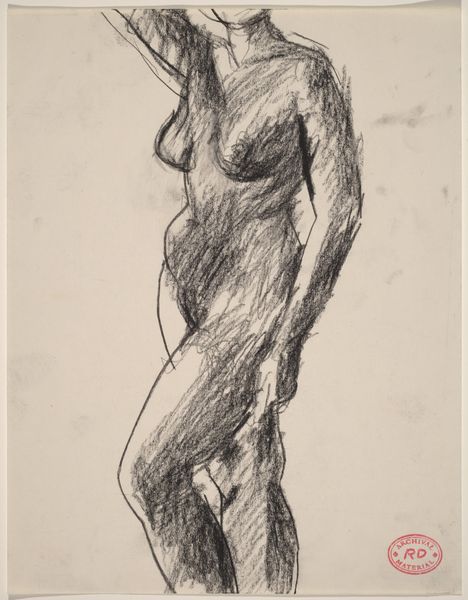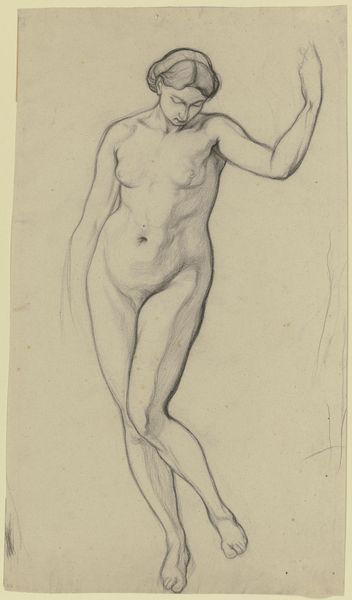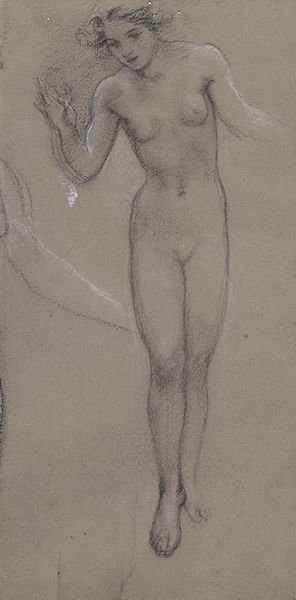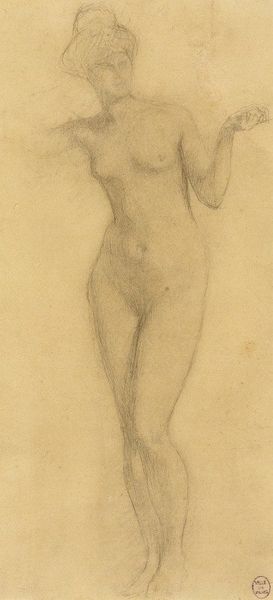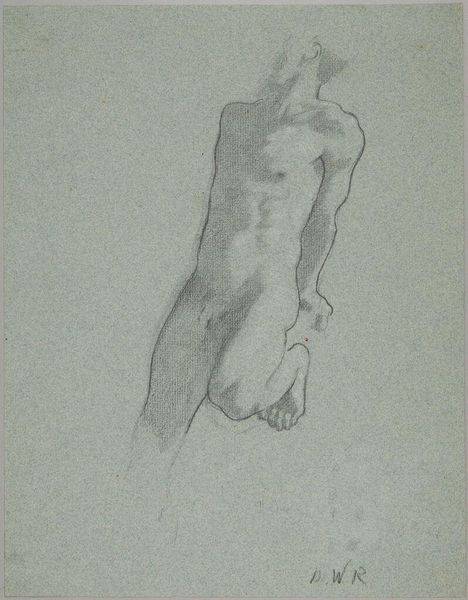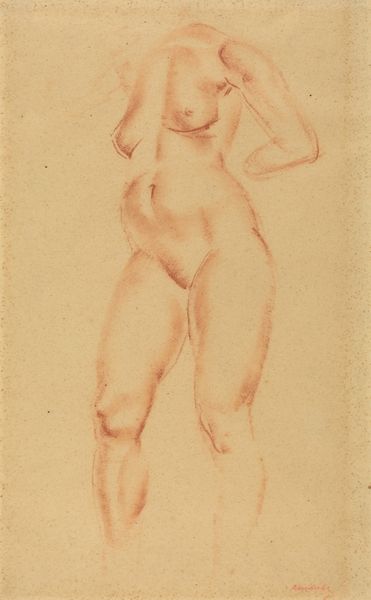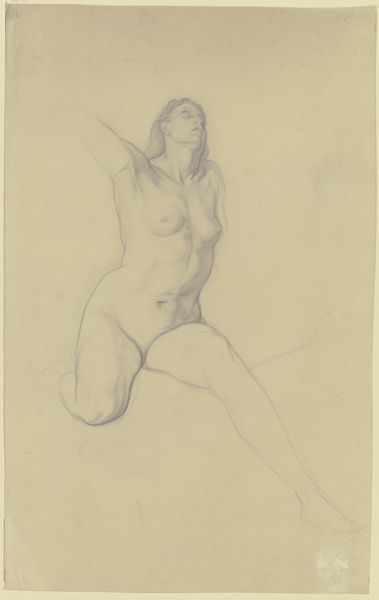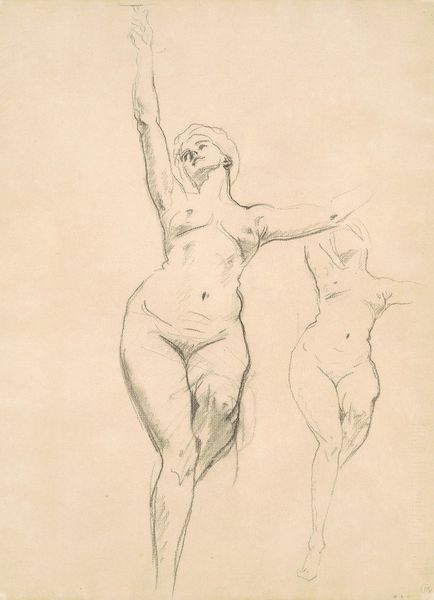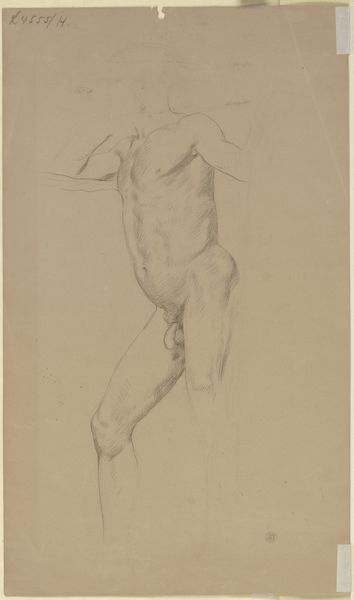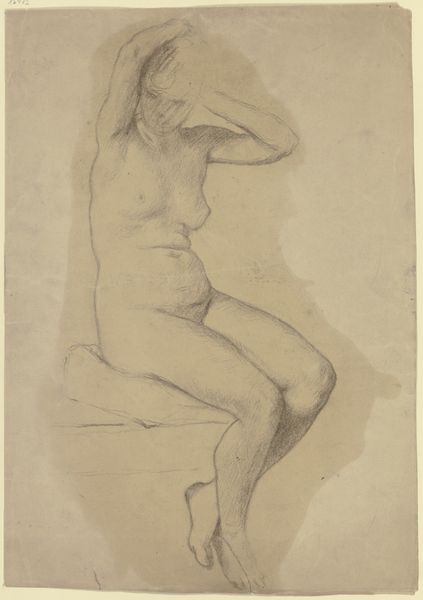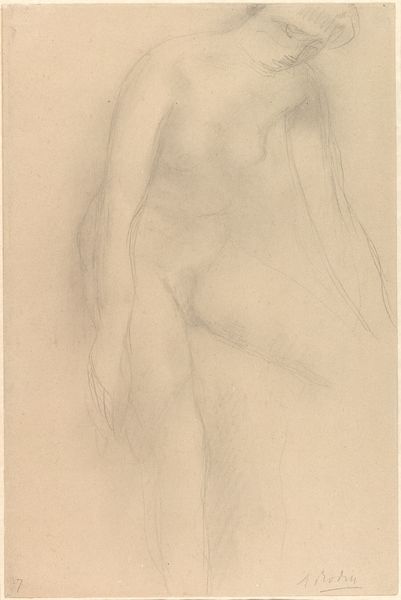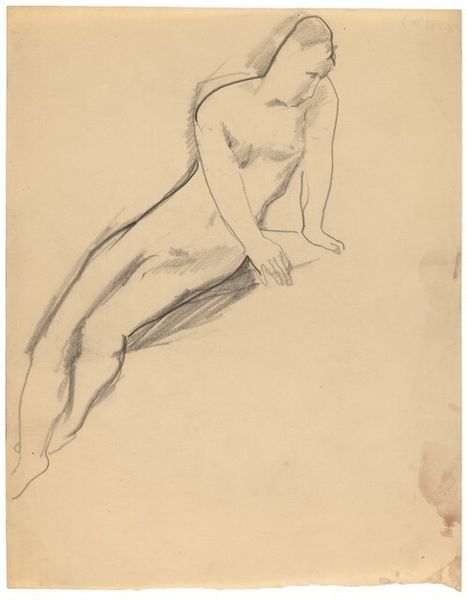
drawing, pencil
#
portrait
#
pencil drawn
#
drawing
#
pencil sketch
#
figuration
#
pencil drawing
#
pencil
#
portrait drawing
#
academic-art
#
nude
#
modernism
Copyright: Public Domain: Artvee
Curator: John Singer Sargent created this intriguing pencil drawing circa 1918, titled "Study for 'Apollo and Daphne'." What captures your eye first? Editor: Definitely the dynamism, that sense of reaching. The figure strains upward, the pencil lines almost vibrating with potential energy. It feels less like a finished work and more like a fleeting moment captured. Curator: Sargent’s work, especially his portraits, were of course deeply embedded within the societal norms of his time. The myth of Apollo and Daphne allowed a classically inspired framework for exploring themes of transformation and desire that would appeal to an educated elite. Do you get a sense of that context from just the lines? Editor: I see the skill first. The way he suggests volume and musculature with such economy—it’s almost sculptural. The lack of a defined setting pushes all the attention onto the body itself. It seems to isolate the body as a site of transformation. I admit I respond more directly to that formal mastery than any potential societal commentary it implies. Curator: And yet, wasn’t Sargent also subtly critiquing that societal obsession with idealized beauty? Think about the story: Daphne escapes Apollo’s pursuit only by being transformed into a tree. Does this unfinished sketch hint at the violence inherent in that transformation, the cost of escaping male desire? Editor: Perhaps. But consider how the light falls, even in this simple drawing. The strong contrasts sculpt the figure and elevate the purely aesthetic quality. The drawing becomes a powerful statement about the body’s capabilities, an almost athletic ideal, despite its incompleteness. Curator: An athletic ideal framed by ancient myth, repackaged for a modern audience comfortable with certain classical tropes! Its genius is not just about anatomy, but how that anatomical perfection fits into the grand theater of power, sexuality and public expectation that Sargent so astutely navigated. Editor: So, we find ourselves at that fascinating intersection of form and culture again. It truly offers so much more than meets the eye at first glance.
Comments
No comments
Be the first to comment and join the conversation on the ultimate creative platform.


